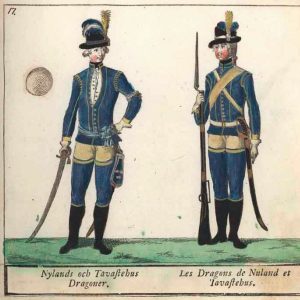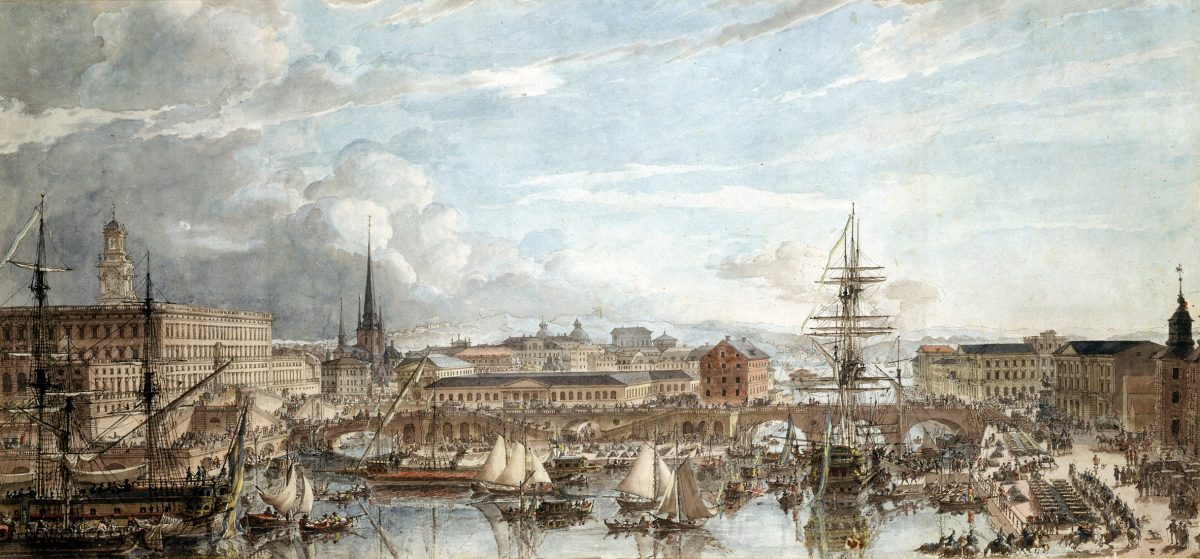Gustav III’s coup d’état
Sweden fought in three separate wars against Russia in the 1700s. After the death of Charles XII in 1718, the Riksdag of the Estates, aka Swedish parliament abolished the royal monarchy and took power. King Gustav III grew up as a strong minded leader and perceived Russia as a continuous threat. He became upset with the MEP’s lenient foreign policy and started to plan a coup to restore the authority of the King. He received the support of the army and was able to conduct a coup d’état in 1772 and reinstated absolute monarchy against the Riksdag of the Estates. The new form of government divided power again between the king and the Riksdag

The road to war
Gustavus III saw his chance to engage Russia in 1787 when war was declared between Russia and Turkey and the Russian main force was moved to the Black Sea. In addition, years of poor harvest in Sweden had reduced the popularity of the king and a distraction was needed. In a secret war council it was decided that the month of July was the best time to declare war against Russia. As the chairman of the council of the realm, Carl Sparre, found out about the plans he warned the king not to proceed with war against Russia. Gustavus III deceived Sparre by lying that the had received warning of Russian plans to attack Finland and was therefore obligated to mobilize the armed forces. Before it was possible to send a letter to Emperor Katarina II to clarify the matter, Gustav III staged a fake assault of Russian cossacks across the border, giving him a cause of war.

Incompetence in war
Gustav III was in Helsinki on July 2nd, 1788 aboard the royal vessel Amphion, when he was notified of the attack and immediately sent a declaration of war to the empress. The King’s brother, Duke Karl, was leading the Naval Fleet but considered hopelessly incompetent and he failed to react immediately to the declaration of war. The Swedish fleet remained in Helsingfors until July 12th as the king returned from a journey to the Russian border. Gustvus III was enraged over the fact that the fleet had remained passive and the fleet sailed off two days later. On the 18th of July the Swedish fleet engaged the Russian fleet at the Battle of Hogland. The battle ended in a draw as the Russian fleet retreated and as a result the plan to land Swedish troops at St. Petersburg was abandoned.

There was a great deal of dissatisfaction with the course of the war among the Swedish army. The war raged on for a few years without noticeable progress, coming to a halt during the cold winter months with breaks during the winter .
Finally the great naval victory at the Battle of Svensksund in 1790 provided Gustavus III with a more favorable position to initiate peace talks with the Russian empress. The peace did not entail any changes in the boundaries between the countries, but Russia lost it´s right to engage in the internal matters of Sweden, a right which it had received in the Peace of Nystad in 1721.
The epidemics which ravaged the Navy caused serious casualty among the Swedes. It is believed that the Navy lost some 10 000 men during the war, Casualties among the army and the Archipelago Fleet amounted to the same approximate figure of which only 1500 men were killed in battle. The disease that plagued the armed forces was spread to the civilian population with infected soldiers returning home and reached disasterous proportions.
The heavy consequences and poor outcome of the war further worsened Gustavus IIIs status among the noblemen. This was a contributing factor in the later assassination of the king on the 16th of Mars 1792. Gustavus was left severely wounded by the attempt and later died of infection.

